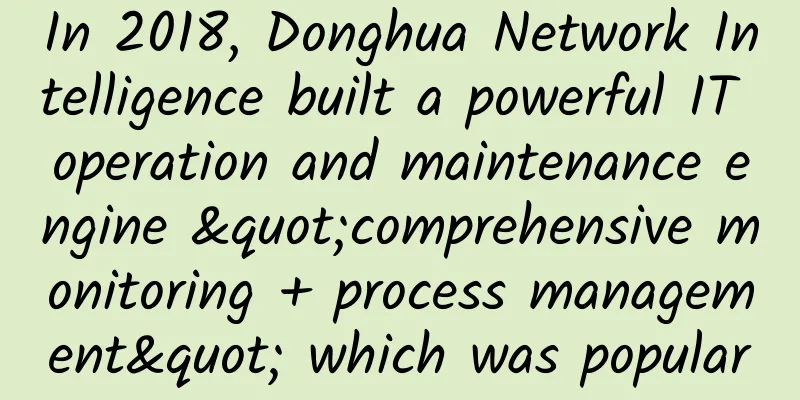How to make the audit of data center assets more efficient?

|
Everyone has their responsibilities, but what to do when the work they are responsible for cannot be delayed or postponed, otherwise it will affect the business development of the enterprise? This is a headache. This applies to most tasks within the data center. The business-critical nature of these facilities means that almost all activities need to be addressed as soon as possible. According to a study by the Ponemon Institute, the average cost of a data center outage is now £552,040, a figure that shows why even repetitive or time-consuming work should not be interrupted.
Are data center staff confident that the data center can operate reliably, or are they worried about problems that could cause data center downtime? Even if the company audits data center assets once a year or every six months, this process will consume a lot of resources, time, and energy of data center staff. If the company collects data manually, then the staff must monotonously and repeatedly record the data of each rack asset, and check whether the rack equipment has been moved since the last audit. Measures and actions must be taken for these changes and handled as soon as possible. Therefore, staff need to record accurately to prevent any errors in future audits. But doing so may reduce experienced staff to statistical recorders of data center assets, when these people should focus on key engineering tasks that add value to the data center. If human error occurs during the audit process, there are consequences. Staff have to spend time searching for missing assets. And IT resources for new projects may be affected, leading to financial inefficiencies and supply issues. Companies are most concerned about the regulatory impact of erroneous or outdated audits, especially if regulators investigate and monitor the audits conducted by the company and may impose financial penalties on the company if errors are made. Meeting needs before businesses need solutions As technology evolves rapidly, organizations need to continually evaluate their data centers to deliver agile applications and stay competitive in the market. They also need to continually optimize available resources, effectively manage costs, and minimize total cost of ownership. According to a survey conducted by IDC, a research organization, as server usage time increases, the annual cost of each server will increase by 148%, server performance will decrease by 39%, and unplanned downtime will increase by 62%. If server assets are not audited regularly and accurately, the loss of business may far exceed the cost of deploying new equipment. If an organization’s data center asset management extends beyond the capabilities of local IT teams, such as leveraging a hybrid ecosystem of multiple data center sites, colocation services, and edge facilities, the challenges IT teams face in tracking and maintaining them grow. Today, the industry is changing with the advent of emerging technologies. The Internet of Things (IoT) and real-time asset management systems will directly impact data center audits, transforming the process from a concern to one that saves costs and improves efficiency. After all, an ideal data center audit should provide clarity of operations, understanding of ways improvements can be made to existing processes and equipment, and methods to ensure compliance. Audits should not be as daunting for IT teams as they are today, but rather enable data center teams to deliver efficient services that benefit the business and customers in the long term. Companies should first understand how much such an audit would cost if existing practices remain unchanged. Many costs to companies are hidden. From the reconciliation and replacement of assets in a company to the productivity and labor of manually entering inventory data, there are many hidden costs that, if not recorded, will increase the company's costs. By deploying real-time asset management, enterprises can achieve significant cost savings by transforming the audit process into a real-time continuous inventory. Real-time asset visibility of data center assets also has great benefits. Enterprises know where assets are and can reduce the workload of monitoring and reporting facilities at all times, which is an approach that can make data center staff happy. Audits of data center assets are necessary for better oversight, but time-consuming and laborious internal audits may become a thing of the past, with more real-time reports generated when needed. |
<<: Future development and current progress of China's Internet of Things industrialization
>>: A brief history of the imported term “404 error”: “The page you are looking for does not exist”
Recommend
With the arrival of 5G, will the newly replaced 4G mobile phone become obsolete?
"Three Gigabits" will be implemented in...
In the 5G era, telecom operators need to strengthen their independent R&D team building
No matter which century it is, talent is always t...
The battle between 4G+ and all-network service triggered by mysterious letter
Recently, a local company of a certain operator s...
Interview surprise: Why use HTTPS? What is it useful for?
Speaking of HTTPS, I believe most people are fami...
VR resolution increased by 4 times, Yiche App released a new version to meet the needs of 5G mobile phone users
December 3, Yiche officially released the Yiche A...
Huawei China ICT Ecosystem Tour 2018 successfully concluded, calling on partners to create a prosperous ecosystem
[Original article from 51CTO.com] From late sprin...
Guess how much of Huawei Cloud's "black technology" is used in Huawei Mall (Vmall)?
[51CTO.com original article] Within a few days af...
Can we rely on HTTPS to keep us safe?
HTTPS is the guardian of web connections Most URL...
South Korean court rules that network operators can charge broadband fees to big data users like Netflix
As the video streaming market explodes, a South K...
What is 5G voice like now?
In the 5G era, real-time communication is still a...
RAKsmart: US CN2 line VPS monthly payment starts from $0.99, Japan/Hong Kong VPS monthly payment starts from $2.99
The day before yesterday, we shared the news of R...
How can operators play the 5G messaging card well?
5G is a technology that can rewrite the "rul...
Sweden bans China from participating in 5G construction? China's 5G technology has no shortage of cooperation
Sweden is a small Nordic country with a populatio...
IDC: 5G commercialization will greatly benefit the manufacturing industry
The issuance of 5G licenses in China has greatly ...
5G core network architecture and some basic concepts
The 5G wireless access network architecture mainl...









